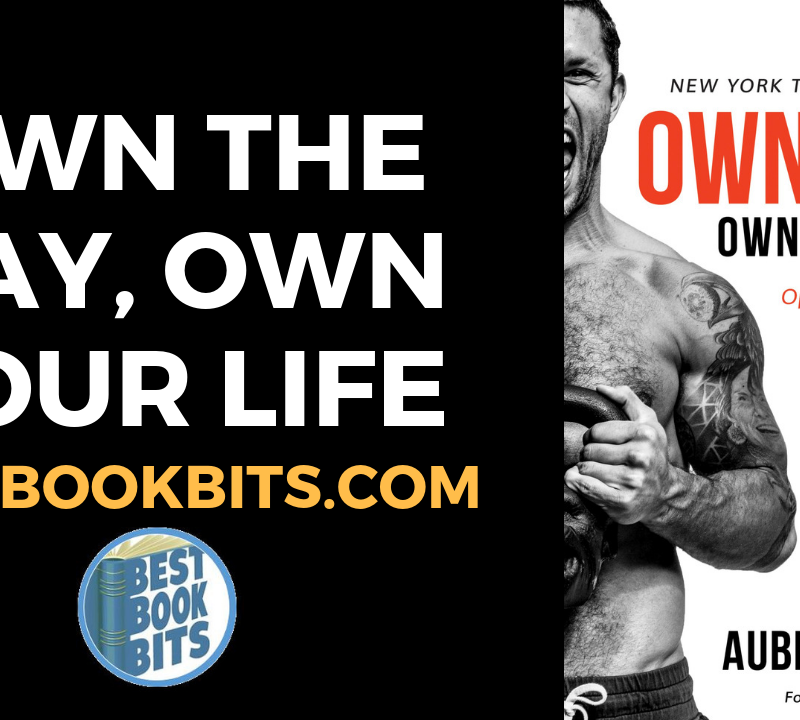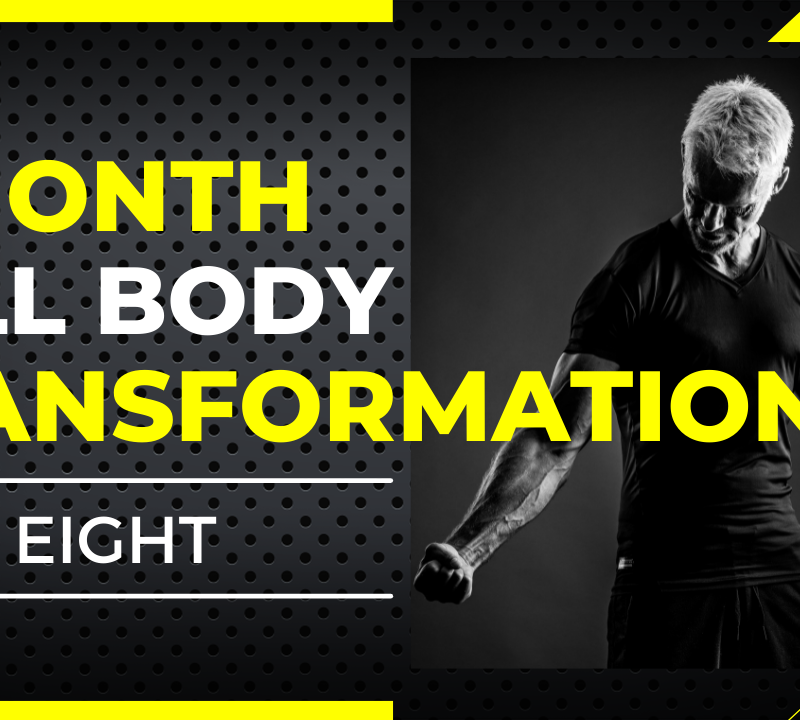♣ CLICK THIS TO STOP TRYING TO ACHIEVE YOUR GOALS BY YOURSELF AND BE COACHED TODAY HERE
♥ CLICK THIS TO DOWNLOAD THIS FREE PDF SUMMARY HERE
♦ CLICK THESE FOR THE FOLLOWING Book | Summaries | Course
YouTube |Spotify | Instagram | Facebook | Newsletter | Website
Thinner Leaner Stronger by Michael Matthews
Michael Matthews’ Thinner Leaner Stronger begins with a straightforward promise:
No matter how bad you might think your genetics are, no matter how lost you might feel after trying and abandoning many types of workouts and diets, you absolutely, positively can have the lean, sexy body that you dream about.
Unsurprisingly, his book is a collection of common mistakes and busted myths supplanted by relevant sets of laws and rules which, if strictly followed, can lose you “10 to 15 pounds of fat in a breeze” and can get you “that ‘Hollywood babe’ body” in no more than three months.
Matthews believes that achieving this is “not nearly as complicated as the fitness industry wants you to believe” and that it is precisely because of the fitness industry that so many women have problems changing their bodies the way they like to.
Seems like a great place to start our summary, doesn’t it?
When the Myth Brings You Money, Print the Myth
“I’m going to tell you something that the kings of the multi-billion-dollar health and fitness industry don’t want you to know,” writes Matthews at the very beginning of Thinner Leaner Stronger. “You don’t need any of their crap to get into shape and to look better than you ever have before.”
Meaning:
- You don’t need to starve yourself with super low-calorie diets;
• You don’t need to constantly change up your exercise routines;
• You don’t need to grind out hours and hours of boring cardio to shed your ugly belly fat and get lean and toned;
• You don’t need to spend hundreds of dollars every month on supplements or fat loss pills;
• You don’t need to completely abstain from “cheat” foods.
Then, why do so many people around you do all of these things?
In one word:
Money.
Simply put, when people are willing to spend money on certain types of products or pieces of advice, then you can be sure that “there will never be a scarcity of new, ‘cutting edge’ things for them to empty their wallets on, and there will always be scores of brilliant marketers inventing new schemes to keep people spending.”
The truth is rather brutal:
Fitness magazines, for one, don’t want you to lose weight and get into the shape of your dreams, because, then, you would stop buying them.
What they want you is this: to buy not just them, but also the supplements they advertise.
Because that’s where they get their money from!
To top this, personal trainers are rarely fitness experts, because all you need to do to pass the certification test is memorize some basic information about exercise and nutrition.
Also, they never gave students nutrition advice, even though that amounts to about four-fifths of the equation for a great body.
The 8 Biggest Muscle Building Myths & Mistakes
As a direct result of the above, “nine out of ten people you see in the gym lifting weights don’t train correctly.”
How would they?
They are usually doing nothing more but following worthless programs found on the internet or in magazines, or maybe a not-very functional exercise routine prescribed by their trainers.
Chances are that you have probably fallen victim to one or more of these false pieces of advice at some point in the past, and that you’re currently doing pretty much the same, i.e., playing the game of no gains or, in the best-case scenario, the game of “slow, stubborn gains.”
Well, Matthews would like to speed up the process for you by first busting the 8 biggest muscle building myths and mistakes.
Let’s hear it, Michael!
Myth & Mistake #1: The Lies of Toning and Shaping
No matter what you do or how well you do it, you will never change the shape of your muscles. It is determined by genetics.
Hence, the claims that some exercises create “long, lean” muscles, while others result in “bulky, ugly” muscles is a myth, unsupported by any known science.
Whether you do yoga or weight training, the shape of your muscles will remain the same, and the only thing that will change is their growth: weight training, of course, grows muscles faster than yoga, which, in turn, makes them more flexible.
All in all, you can have sexy arms and shapely legs—only not the very ones of your favorite model.
Myth & Mistake #2: Lifting Weights Will Make You Bulky
This myth is already addressed in #1, but Matthews is so irritated by it that he feels the need to repeat it.
“Unless you’re a genetic freak,” he writes, “you not only won’t get bulky from weight training, you couldn’t even if you wanted to. Your body simply can’t do it. It lacks the hormones and genetic programming.”
Myth & Mistake #3: The More You Exercise, the Better
Exercising too long on a daily basis leads to overtraining which, in turn, makes you lethargic and gives your body too little time to repair your muscles. Consequently, this can sometimes cause you to lose muscles and hold onto fat.
The optimal time: 45 to 60 minutes of workout per day.
Myth & Mistake #4: You Have to “Feel the Burn” to Get Bigger and Stronger Muscles
When your muscles are burning, what you’re actually feeling is lactic acid building up in your muscles, and that may be not as bad as it sounds, but it is not good either.
Not to go into detail, it certainly means that you’re doing yourself more harm than good.
“No pain, no gain”?
♣ CLICK THIS TO STOP TRYING TO ACHIEVE YOUR GOALS BY YOURSELF AND BE COACHED TODAY HERE
♥ CLICK THIS TO DOWNLOAD THIS FREE PDF SUMMARY HERE
♦ CLICK THESE FOR THE FOLLOWING Book | Summaries | Course
YouTube |Spotify | Instagram | Facebook | Newsletter | Website
“One of the worst fallacies out there,” according to Matthews.
Myth & Mistake #5: Wasting Time with the Wrong Exercises
If you’re going to the gym to improve your muscle tone and get stronger, then you need to know that this requires three simple things: “lift progressively heavier weights, eat correctly, and give your body sufficient rest.”
The most effective muscle-building exercises are known as “compound exercises” (because they involve multiple muscle groups) and include the Squat, Deadlift, and Bench Press.
“Isolation exercises” such as the Cable Fly, Dumbbell Curl, and Leg Extension (which involve one muscle group only) are little short of wasting your time.
Myth & Mistake #6: Training Like an Idiot
Unfortunately, most people don’t have a clue as to the proper form of exercises, and this doesn’t merely hold back their progress, but it also opens the door to debilitating injuries since it causes unnecessary wear and tear on ligaments, tendons, and joints.
Don’t be that idiot: exercise only what science says is helpful and beneficial.
Myth & Mistake #7: Training Like a Wussy
OK, this is the other end of the spectrum: training without pushing yourself forward. That will, of course, never work.
Even though evolution works against you when it comes to your perfect body—everyone avoids discomfort in favor of pleasure and ease—if you’ve decided to go to the gym, then you need to put in the effort.
Especially when it’s difficult to do so.
Myth & Mistake #8: Eating to Stay Weak or Get Fat
As we said above, exercising is merely one part of the equation; the other is nutrition. And even the women who know this are way, way off when it comes to eating properly.
“If you don’t eat enough calories and get enough protein, carbs, and fats throughout the day,” writes Matthews, “your muscles simply don’t grow bigger or stronger. It doesn’t matter how hard you train; if you don’t eat enough, you won’t gain any muscle to speak of.”
The opposite is also true: “if you eat too many calories, eat bad carbs and fats, and don’t know how to proportion and plan your meals properly, you can gain muscle, but it will be hidden underneath an ugly sheath of unnecessary fat.”
The Real Science of Muscle Growth
Congratulations: you’ve just learned how to do it wrong! Now, it’s time for the more important part: how do you correctly go about building your muscles?
By never forgetting and always adhering to the four laws below, because, as Matthews says, they are “as certain, observable, and irrefutable as those of physics.”
The First Law of Muscle Growth: Muscles Grow Only if They’re Forced to
The first law of muscle growth is one that needs explaining rather than merely stating. In other words, everybody knows that muscles grow only if they are forced to, but very few people know why.
Matthews explains.
It’s rather simple, really.
By lifting weights, you’re actually causing tiny tears (i.e., “micro-tears”) in the muscle fibers, which then your body repairs so that it is better prepared to handle the stimulus which caused the damage in the first place.
Consequently, if you’re not producing “micro-tears” in your muscles, your muscles won’t grow since they’d deem themselves adapted to your current needs.
But, just as important, if you’re producing too many “micro-tears” in your muscles, then your body won’t be able to repair them, and this will hinder your muscle growth as well.
“For optimal muscle growth,” concludes Matthews, “you must train in such a way that causes optimal micro-tearing and then you must feed your body what it needs to grow and give it the proper amount of rest.”
The Second Law of Muscle Growth: Muscles Grow from Overload, Not Fatigue or “Pump”
As we said above, the feeling of “burning” in your muscles is not synonymous with muscle growth; it’s actually just fatigue in the form of too much lactic acid.
Consequently, the burning sensation is not an indicator of optimum workout—it’s oftentimes quite the opposite.
The same holds true for the pump you feel when training. It is merely the result of blood being “enclosed” in the muscles, and, while not bad, it’s also not the primary driver of growth.
What is, then?
Overload.
Overload always gives muscles a very clear reason to grow, which means that plain old heavy weightlifting is the best workout for muscle growth known to man.
And, contrary to what many trainers and magazines say, you don’t need to change your routine every week or two: you can do the above every day, and the results will inevitably show.
The Third Law of Muscle Growth: Muscles Grow Outside the Gym
If you understood well the first law of muscle growth, you already know that muscles actually grow outside the gym.
Inside it, you’re merely creating the “micro-tears” which your body needs to repair while you’re resting afterward; it is this “repair” the thing we term as “muscle growth.”
Consequently, working out too much doesn’t do you any good. Sleeping eight hours a day after exercising for no more than one does.
The Fourth Law of Muscle Growth: Muscles Grow Only if They’re Properly Fed
Even if you do the perfect workout and give your muscles the optimum amount of rest time, if you don’t eat correctly, your muscles won’t grow bigger or stronger—period.
“Simply put,” writes Matthews, “your diet determines about 70 – 80% of how you look (muscular or scrawny, lean or flabby).”
Precisely because of this, instead of summing up the main points of the book, we’ve opted to share with you a few more nutrition-related insights from Thinner Leaner Stronger in our “Key Lessons” section.
We know you won’t mind.
Key Lessons from “Thinner Leaner Stronger”
- The 5 Biggest Fat Loss Myths & Mistakes
2. The Real Science of Healthy Fat Loss
3. Setting Fitness Goals to Motivate Yourself
The 5 Biggest Fat Loss Myths & Mistakes
Just as there are muscle building myths and mistakes, there are myths and mistakes related to burning fat as well. Matthews dispels five of them:
#1. Counting Calories Is Unnecessary
Of course it’s pretty essential to count your calories if you want to get fit! If you want to lose fat, your body must burn more energy than it receives through your food, and the energy potential of food is measured in calories. Consequently, eating more calories than you can burn through the day results in more fat. It’s that simple.
#2. Do Cardio = Lose Weight
Not if you’re eating too many calories! Cardio enhances fat loss, but only to a certain point. If you eat 600 calories more than you need, jogging will burn only half of that, and you’ll still gain fat at the end.
#3. Chasing the Fads
The Atkins diet. The paleo diet. The wild diet. The bulletproof diet… Well, how many diets are there? you wonder. Well, the truth is, there are only a few rules (see next lesson), and everything else is just a fad which makes some people serious money.
#4. Doing Low Weight and High Reps Builds “Lean Muscle”
Being lean is not a matter of exercising: it is a matter of having low body fat. And it’s something you certainly won’t achieve with a routine based on low weight and high reps.
#5. Spot Reduction
Fat can be reduced only via proper dieting, and not via isolated exercises targeted at spot reduction. And when it is reduced, your body will decide in what way. “Our bodies are all genetically programmed differently, and there’s nothing we can do to change that,” says Matthews.
The Real Science of Healthy Fat Loss
Now that you know the myths—it’s time you get to know the three fundamental laws of fat loss:
The First Law of Fat Loss: Eat Less Than You Expend = Lose Weight
Getting toned has nothing to do with fads and magazine advice, and it has everything to do with simple biology and even simpler math: energy consumed versus energy expended.
Unless your metabolism is very fast, every calorie you give to your body that isn’t burned off turns to fat. If you give your body fewer calories than it can burn throughout the day, than it makes up for the deficit by burning its own energy stores, i.e., fat.
The bottom line: it doesn’t matter what you eat, as long as your calories are right.
The Second Law of Fat Loss: Eat on a Schedule That Works Best for You
As we just said, fat loss is much more related to how much you eat than it is to when you eat.
Since different people have different metabolisms, there isn’t one definite science-backed recommendation to take note of when it comes to your meal schedule.
Just adhere to the one which seems to work best for you based on your experience.
The Third Law of Fat Loss: Use Cardio to Help Burn Fat
Even though cardio doesn’t equal burning fat, it does accelerate fat loss, and if your genetics isn’t on your side (fast calorie-regulating metabolism), it’s a nice way to get into the “super lean” category (15% body fat and under).
Setting Fitness Goals to Motivate Yourself
“This is so simple and clichéd that you’d think it wouldn’t need stating, but it does,” says Michael Matthews before stating the obvious: “Before you lift a weight, hop on a treadmill, or cut a calorie, you must have specific, tangible goals set in your mind as to why you’re doing it.”
Setting them is as easy as 1-2-3:
#1. Determine what your ideal body should look like; don’t just throw around adjectives: find a picture; after all, you don’t go to the barbershop without one, do you?
#2. Determine your ideal state of health. Matthews’ is along these lines: “o have a vital, energetic, strong, and disease-free body that lives long and allows me to stay active and enjoy my life to the fullest.” That’s motivating, isn’t it?
#3. Give yourself a reason to achieve these goals. Whether it’s being better at some of your hobbies or getting more attention from your partner—it doesn’t matter. Just give yourself one that will motivate you along the road. Because, after all, it is a long one.
“Thinner Leaner Stronger Quotes”
- Building lean muscle is, in essence, just a matter of following these four laws religiously: lift hard, lift heavy, get sufficient rest, and feed your body correctly.
- Cardio can enhance fat loss in two ways—burning calories and speeding up your metabolic rate—but that’s it.
- Research shows that certain activities like watching TV and drinking alcohol can increase, not decrease, stress.
- The most important aspect of meal scheduling is that you work out what makes dieting most enjoyable for you, and what fits your lifestyle. This way you can actually stick to your diet, which is what matters in the end.
- No matter how ‘ordinary’ you might think you are, I promise you that you can not only create an extraordinary body, but an extraordinary life as well.
♣ CLICK THIS TO STOP TRYING TO ACHIEVE YOUR GOALS BY YOURSELF AND BE COACHED TODAY HERE
♥ CLICK THIS TO DOWNLOAD THIS FREE PDF SUMMARY HERE
♦ CLICK THESE FOR THE FOLLOWING Book | Summaries | Course
YouTube |Spotify | Instagram | Facebook | Newsletter | Website













